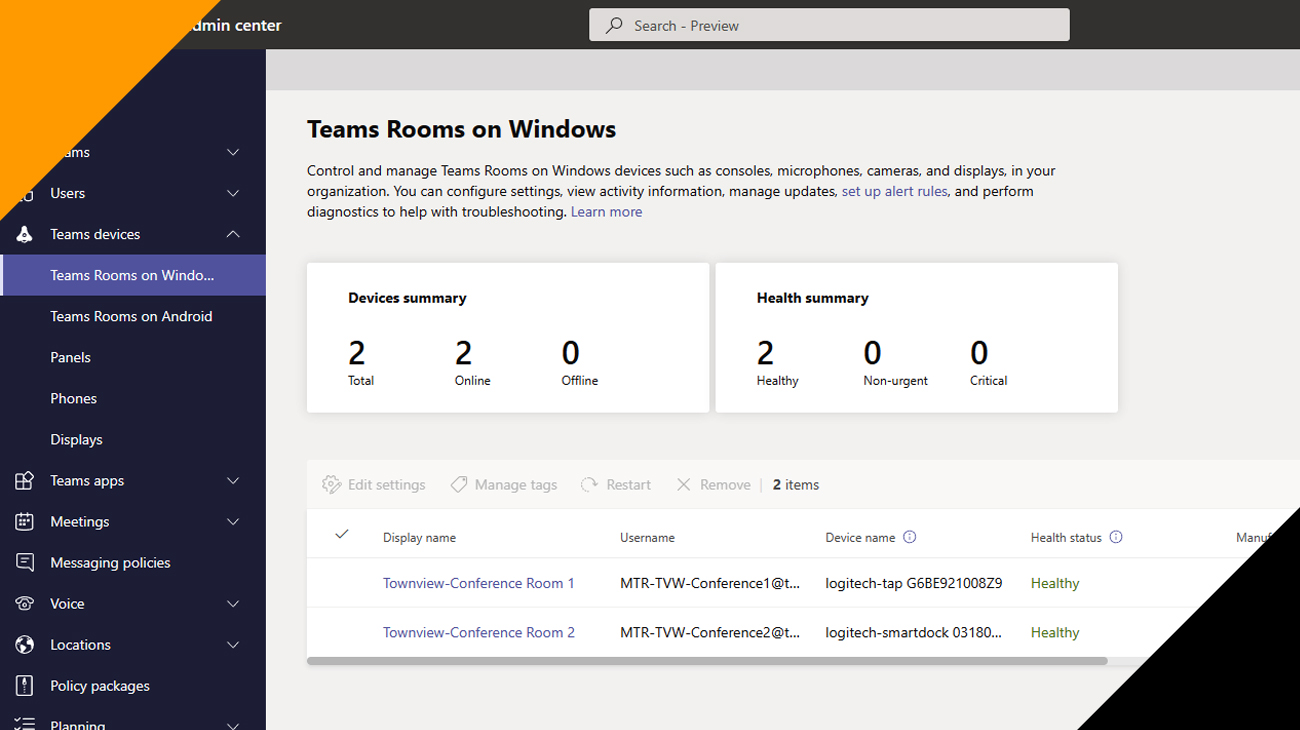What Is Test Data?
In the current era of revolutionary information and technology advancement, testers frequently consume a large amount of test data over the software testing life cycle. The testers not only collect and manage data from existing sources, but they also create massive amounts of test data to ensure their quality booming contribution to the delivery of the product for real-world use. As a result, testers must continue to research, understand, and implement the most effective methods for data collecting, generation, maintenance, test automation, and comprehensive data management for all forms of functional and non-functional testing. We’ll go through the different types of test data and why they are important in this tutorial.
Table of content:
- What Is Test Data And Why It Is Important
- What are the types of test data?
- What are the different ways of preparing test data?
- Test Data Sourcing Challenges
- Corrupted Test Data
- How do I keep my data intact in any test environment?
- Test Data for the Performance Test Case
- What is the ideal test data?
- How Do You Prepare Data that will Ensure Maximum Test Coverage?
- Properties Of A Good Test Data
- Test Data Properties
- Statistical tests
- Tests of Statistical Significance
- Parameter Test data
What Is Test Data And Why It Is Important?

According to a study, 30 percent to 60 percent of a tester’s work is spent searching, managing, maintaining, and generating test data. Data preparation is undeniably one of the most time-consuming phases of software testing. Nonetheless, most data scientists spend 50 percent to 80 percent of their model development effort organizing data, which is a fact across many fields. Now, taking into account the legislation as well as the Personally Identifiable Information (PII), the testers’ participation in the testing process is overwhelmingly positive. The test data’s authenticity and trustworthiness are considered a non-negotiable factor for today’s business owners. According to the product owners, the biggest difficulty is ghost copies of test data, which affects the reliability of any application at this critical moment of client demand/requirements for quality assurance. Given the importance of test data, most software application owners will not accept apps that contain phony data or have inadequate security measures.
Why don’t we review what Test Data is at this point? We require information that is utilized as input to execute the tests for identifying and locating the defects (application errors) and developed scenarios of the application under test when we start building our test cases to verify and validate the given functionalities and developed scenarios of the application under test. And we know that to get the bugs out, this information must be precise and complete. It’s what we refer to as “test data.” To make it accurate, names, countries, and other non-sensitive information can be used. However data such as contact information, SSN, medical history, and credit card information are sensitive.
The data could be in any format, such as:
- System test data
- Performance test data
- SQL test data
- XML test data
You’ll need input data for any type of test if you’re writing test cases. The tester can provide this input data during the execution of the test cases, or the program can select the appropriate input data from specified data locations. The data could be any type of application input, any type of file loaded by the application, or information read from database tables. A test setup/test plan includes preparing appropriate input data. It’s commonly referred to as “testbed preparation” by testers. All software and hardware requirements in the testbed are specified using predefined data values. There’s a chance you’ll overlook some crucial test cases if you don’t use a systematic strategy to gather data while designing and executing test cases. Testers can build their data to meet their testing requirements.
Don’t rely on data generated by other testers or on data from standard production. Always start over with a new collection of data that meets your needs. It’s not always practical to generate a fully new set of data for each build. In such circumstances, regular production data might be used. However, keep in mind that you must add/insert your own data sets into this current database. Using existing sample data or a testbed and appending your fresh test case data each time you get the same module for testing is one of the finest ways to create data. This allows you to compile a complete data set over time.
What Are The Types Of Test Data?
There are four types of test data.
- Boundary Test Data
- Valid Test Data
- Invalid Test Data
- Absent Data
| Boundary Test Data: | This type of information aids in the removal of faults that occur during the processing of boundary values. This data type contains a collection of sufficient boundary values for handling the application. And if the tester goes above this, the application may be broken. |
| Valid Test Data: | These data types are valid, and the program supports them. These aid in the verification of system functions. When an input is given, they aid in the receipt of the expected result. |
| Invalid Test Data: | Unsupported data formats are among these data types. The data is utilized by the teams to determine whether or not the application is functioning properly. By entering erroneous values, the app should provide a suitable error message and alert the user that the data is unfit for use. |
| Absent Data: | The files that do not include any data are referred to as no data or blank files. Blank data is useful for testing how the app reacts when no or no data is entered into the software. |
What Are The Different Ways Of Preparing Test Data?

Manual Test Data Creation
This approach of generating test data is a straightforward one. Valid, invalid, null, standard production data, and data set for performance are some of the types of test data contained in this approach. The advantage of this test data type is that it does not require any more resources; it is developed using the testing team’s talents and ideas. However, it takes longer and produces less productivity. This method may be harmed if the tester lacks the required topic knowledge, leading in data with defects.
Back-end Data Injection
Back-end servers with a large database are used in this testing strategy. This data creation method eliminates the need for front-end data entry and allows for faster data injection. Furthermore, this procedure does not necessitate the assistance of professionals or the creation of backdated data. However, if the strategy is not done correctly, there are limitations that can put the database and application at danger.
Automated Test Data Generation
Data generating tools are utilized in this strategy to process and improve results with large amounts of data. Web Services API and Selenium are commonly used tools in this automated test data creation strategy. The benefit of this kind of data generation is that the data generated by automation (automated testing) will be of high quality and accuracy. There is no need for human invention because the rate of product delivery is faster. However, there are drawbacks, such as financial considerations and the availability of skilled personnel.
Third-party Tools
It gets easy to develop and insert data into the system by using third-party tools. Because these tools have a thorough understanding of back-end test systems, they can assist in obtaining data that is very close to real-time. The correctness of the data and the scope of the tests that can be run on historical data are two advantages of these technologies. The downside of this procedure is that it is extremely costly, and there is a time limit on which it can be used.
Test Data Sourcing Challenges
The testers view data sourcing requirements for subsets as one of the domains in test data generation. For example, suppose you have a million consumers and only require a thousand for testing purposes. And the sample data should be consistent and statistically match the target group’s suitable distribution. To put it another way, we’re expected to identify the perfect individual to test with, which is one of the effective ways to test use cases.
Furthermore, the sample data should be consistent and statistically match the appropriate distribution of the target population. In other words, we’re required to find the ideal person to test with, which is one of the most successful ways to test use cases. In addition, the process has various environmental restrictions. One of them is PII policy mapping. The testers must classify PII data because privacy is a big barrier.
The Test Data Management Tools were created to address this problem. These testing tools make policy recommendations based on the standards and catalogs they have. However, it is not a particularly safe exercise. It continues to provide the option of auditing one’s actions. To stay on top of current and even future difficulties, we should always ask questions like When/where should we begin conducting TDM? What is it that should be automated? How much money should businesses set aside for testing in the areas of human resource development and the adoption of newer TDM tools? Should we begin by performing functional or non-functional testing? And there are a lot more questions.
The following are some of the most prevalent test data sourcing challenges:
- It’s possible that the teams lack the necessary test data generation tools, expertise and skills.
- The coverage of test data is frequently insufficient.
- During the data collection phase, there was less clarity in the data requirements, especially when it came to volume criteria.
- The data sources are not accessible to the testing teams.
- Developers take too long to provide testers access to production data.
- Based on the developed business scenarios, production environment data may not be fully usable for testing.
- Large amounts of data may be required in a short amount of time.
- To test some of the business scenarios, data dependencies/combinations were used.
- Time consuming: For data collection, the testers spend more time than necessary dealing with architects, database administrators, and business analysts.
- The data is usually created or prepared as the test is being run.
- Versions of programs and data are available.
- Several programs have continuous release cycles.
- Personal Identification Information Protection Legislation (PII).
The developers prepare the production data through white box testing. This is where QAs must communicate with developers in order to expand the testing coverage of the AUT. One of the most challenging tasks is to include every potential scenario (100 percent test case) as well as every potential negative case.
Corrupted Test Data

Before running any test cases on existing data, check sure the data isn’t faulty or obsolete, and that the application under test can access the data source. When many testers are working on different modules of an AUT in the same testing environment at the same time, the risks of data corruption are extremely high. The testers adjust the existing data in the same environment to meet their needs/requirements for the test cases. When the testers are through with the data, they usually leave it alone. When the next tester receives the updated data and re-runs the test, there is a chance that that particular test will fail, even if it is not due to a coding fault or flaw.
In the majority of cases, this is how data becomes corrupted and/or obsolete, resulting in failure. We can use the solutions listed below to avoid and limit the likelihood of data contradiction.
- Having a data backup is essential.
- Restore the original status of your edited data.
- The testers were divided into groups to divide the data.
- Keep the data warehouse administrator informed of any changes or modifications to the data.
How Do I keep my data intact in any test environment?
The majority of the time, multiple testers are tasked with testing the same build. More than one tester will have access to the same data set in this situation, and they will try to change it to meet their demands. If you’ve prepared data for specific modules, the easiest approach to ensure that your data set remains intact is to make backup copies of it.
Test Data for the Performance Test Case

Performance tests (performance testing) necessitate a vast amount of data. Creating data manually may miss some small flaws that are only detected by using actual data generated by the application under test. If you need real-time data that you can’t get from a spreadsheet, ask your manager to make it available from the live environment. This data will be helpful in ensuring that the program runs smoothly for all valid inputs.
What is the ideal test data?
If all of the application defects can be recognized with the smallest data set size, data can be called to be perfect. Try to prepare data that includes all application functions while staying within the budget and time constraints for data preparation and testing.
How Do You Prepare Data that will Ensure Maximum Test Coverage?
Consider the following categories when creating your data:
- No data: Use blank or default data to run your test cases. Examine the error messages to see if they are appropriate.
- Valid data set: Create it to see if the application is performing as expected and that legitimate input data is being saved properly in the database or files.
- Invalid data set: To test application behavior for negative values and alphanumeric string inputs, create an incorrect data collection.
- Illegal data format: Make a single data set with an illegitimate data format. Data in an invalid or illegal format should not be accepted by the system. Also, make sure that appropriate error messages are generated.
- Boundary Condition dataset: Dataset with data that is out of range. Determine which application boundary situations exist and create a data set that includes both lower and upper boundary conditions.
- The dataset for performance, load testing and stress testing: This data set should have a lot of information in it. Creating different datasets for each test condition ensures that all test conditions are covered.
Properties Of A Good Test Data

For example, you must test the ‘Examination Results’ section of a university’s website as a tester. Assume that the entire application has been integrated and is in a state of ‘Ready for Testing.’ The modules ‘Registration,’ ‘Courses,’ and ‘Finance’ are all related to the ‘Examination Module.’
Assume you have sufficient knowledge of the application and have compiled a comprehensive list of test scenarios. These test cases must now be designed, documented, and executed. You must mention the allowed data as input for the test in the ‘Actions/Steps’ or ‘Test Inputs’ section of the test cases. The data used in test cases must be carefully chosen. The correctness of the Test Case Document’s ‘Actual Results’ section is mostly determined by the test data. As a result, the phase of preparing the input test data is critical.
Test Data Properties
The test data should be carefully chosen and have the following four characteristics:
Realistic
By realistic, we mean that the data should be correct in real-life settings. To test the ‘Age’ field, for example, all of the values must be positive and 18 or above. It is self-evident that university admissions candidates are typically 18 years old (this might be defined differently in terms of business requirements).
If testing is done with realistic test data, the app will be more robust because most potential flaws can be caught using realistic data. Another benefit of realistic data is its reusability, which allows us to save time and effort by not having to create new data every time. I’d like to introduce you to the concept of the golden data set when we’re talking about realistic data. A golden data collection is one that includes nearly all of the possible scenarios that could arise in a genuine project. We can provide maximal test coverage by employing the GDS. In my organization, I utilize the GDS for regression testing, which allows me to test all possible scenarios that could arise if the code is deployed.
There are many test data generator solutions on the market that examine the column attributes and user definitions in the database and generate realistic test data for you based on this information. SQL Data Generator, DTM Data Generator, and Mockaroo are a few notable examples of tool programs that produce data for database testing.
Practically Valid
This is comparable to but not the same as realistic. This attribute is more related to AUT’s business logic, for example, a value of 60 is reasonable in the age field but practically invalid for an applicant for a graduate or master’s program. An appropriate age range in this scenario would be 18-25 years (this might be defined in requirements).
Versatile to Cover Scenarios
In a single scenario, there may be several subsequent conditions, so choose the data wisely to cover as many aspects of the scenario as possible with the smallest amount of data, e.g., when creating test data for the result module, don’t just consider the case of regular students who are successfully completing their program. Pay special attention to students who are repeating the same course but are in separate semesters or programs.
Statistical Tests

In hypothesis testing, statistical tests are performed. Statistical tests are based on the null hypothesis that there is no correlation or difference between groups. You can use the flowchart to determine the correct statistical test for your data if you already know what types of variables you are dealing with. Statistical tests make a few assumptions about the data they’re looking at: Quantitative variables are measurements of quantities (e.g., the number of trees in a forest). Your sample size must be big enough to reflect the true distribution of the population being investigated for a statistical test to be valid.
Note: When the variances are known and the sample size is large, a z-test is performed to evaluate whether two population means are not the same.
The population mean is compared using the z-test. The population mean and standard deviation are the parameters employed. The population mean is the same as the sample mean (Null hypothesis) z = (x —) / (/n), where x=sample mean, u=population mean, and /n=population standard deviation. When the population characteristics (mean and standard deviation) are unknown, a t-test is employed.
Tests of Statistical Significance
Any proposed link between two variables raises two questions: Statistical significance tests are used to answer the question: how likely is it that what we assume is a relationship between two variables is actually just a coincidence? Statistical significance tests tell us how likely it is that the association we think we’ve discovered is attributable only to chance. Statistical significance indicates that there’s a good possibility we’re right about the existence of a relationship between two variables. However, when the strength of the correlations weakens and/or the degree of alpha decreases, greater sample numbers will be required to establish statistical significance.
The following are the 3 steps in testing for statistical significance
- State the Research Hypothesis
- State the Null Hypothesis
- State the Research Hypothesis
The expected link between two variables is stated in a study hypothesis. If the Chi-Square value is large enough, we can deduce that it represents the level of statistical significance at which the association between the two variables can be assumed to exist. Similarly, if all other factors are equal, the higher the level of alpha, the larger the value of Chi-Square will need to be to achieve statistical significance. Either the estimated Chi-Square value meets the statistical significance threshold or it does not. In order to achieve statistical significance, at-score must be distant from the mean. Finally, tests for statistical significance must always be combined with measures of association.
Parameter Test Data
The parameter Test Data is typically used for Data-driven Testing (database testing) and is used to store data that will be used in a single Application Version. The Test Data Profile page is where parameter test data is saved and handled. Its application is restricted to a single Application Version. The Example is used to invoke parameter test data. Scenario for a Use Case: Using a Test Data Profile that contains a set of usernames and passwords, multiple Login information are fed into a single Test phase. The parameter Test Data is typically used for Data-driven Testing (database testing) and is used to store data that will be used in a single Application Version. Data-Driven testing is a software testing technique that stores test data in a table or spreadsheet format. Its application is restricted to a single Application Version.
Relevant Information on Test Data

- Integration testing, system testing, and acceptance testing, sometimes known as black-box testing, are all performed by Quality Assurance Testers. The testers in this testing technique of testing are not responsible for the internal structure, design, or code of the application under test.
- Users involved in the software development life cycle (SDLC), such as BAs, developers, and product owners, should be actively involved in the preparation of test data.
- API testing is a difficult test practice in the software and QA process because it uncovers errors, inconsistencies, and departures from intended application behavior.
- Unit testing is a type of software testing that includes the initial testing phase of a software’s smallest components or modules being tested separately.
- Any security breach can have far-reaching and far-reaching consequences, such as the loss of customer trust and legal ramifications. It is advised that you utilize security testing services for your application to avoid this situation.
- Developers provide their essential data for white box testing in order to cover as many branches as feasible, all paths in the program source code, and the negative Application Program Interface.
- Load testing is the technique of simulating several users accessing a software program at the same time in order to mimic the expected usage of the application.
- There are several types of testing that you can use to make sure that changes to your code are working as expected.
- Smoke tests are basic tests that verify the application’s basic operation.
- Manual testing is done physically/in person, with proper tooling, by browsing through the application or interacting with the product and APIs. Manual testing, often known as exploratory testing, has a place in today’s world.
- Data is said to be ideal if for the minimum size of the data set all the application errors to get identified.
- Try to prepare data that includes all application functionality while staying within the budget and time constraints for data preparation and testing. Additionally, testers should provide data that will assess every application functionality while staying within the budget and schedule constraints.
- The data in the test file may include not only input values, but also output or expected results related to the successful operation of the program under test.
- If developers take too long to give testers production data access, the data in the production environment may not be entirely usable for testing based on the business scenarios that have been defined.










